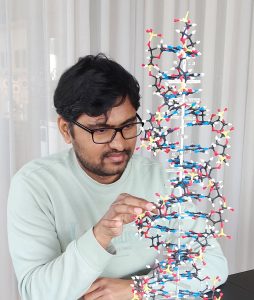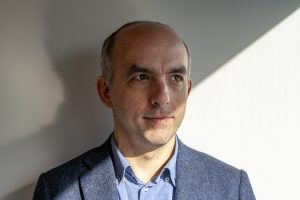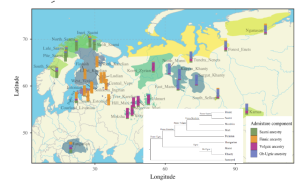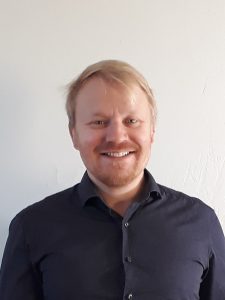
Marjo Kolehmainen
TIAS postdoctoral fellow, Turku Institute for Advanced Studies & Media Studies, University of Turku;
Docent in Gender Studies, University of Tampere
The Covid-19 pandemic elevated digital screens to the core of everyday life. Screens can be found everywhere, including museums and galleries, stock exchanges, train stations, aeroplane seats, banks, food courts, record stores, gas stations, office desks and in the palm of one’s hand (Wasson, 2007). While screens are examples of everyday digital materialities (Sumartojo & Graves, 2021), the Covid-19 pandemic foregrounded in particular the significance of live video calls in sustaining everyday lives. During the pandemic, screen technology supported various societal infrastructures and cultural practices, such as distance learning, white-collar remote work, online health care consultations and remote dance and music lessons. The health measures of physical distancing, in particular, have shifted many activities online. I have also personally experienced it, including work-related Zoom meetings, children’s dental care via Microsoft Teams and attending a celebration via live stream on YouTube.
My interest in screens was initially sparked when conducting a study on how psychotherapists, psychologists, family counsellors and other therapy and counselling professionals experienced technology in their work during the pandemic. I originally collected interview data as part of a research consortium, Intimacy in Data-driven Culture (IDA), funded by the Strategic Research Council at the Academy of Finland. Several of my interviewees reflected upon the change in setting and venue, and the themes of visibility and invisibility recurred. For instance, they described how screen view limits the amount of visual information they receive, from seeing the body as a whole to a variety of gestures (Kolehmainen, 2022). The screens were repeatedly experienced as barriers, either in physical, affective or mental ways. Similar descriptions, of course, have been voiced by many professionals regarding screen usage in other contexts, such as university lecturers on teaching in higher education.
Yet my research also shows that screens should not be viewed solely as limiting human-to-human interaction and as reducing communication to ‘talking heads’. Concerns over remote encounters echo the negative attributes with which technology is often associated. Especially in care work, technology is often seen as ‘cold’, impersonal and instrumental in contrast to human care and warmth (Pols, 2012). In debates concerning digitalised psychotherapy, for instance, this takes the form of framing remote treatment as a ‘substitute’ or otherwise starting with a dichotomous opposition of in-person and technologically mediated consultations. Posthuman theory enables us to recognize how screens, with their own affordances and qualities, come to matter in various ways. As humans, we expand both expression and perception through screens. My interviewees recalled several instances in which they made novel observations. These observations were both enabled by the chance to see the client in a new setting and by the purposeful exhibition of one’s home, artwork or pets.

Image source: Pexels
As suggested earlier, screens also have their own affordances and qualities. One example is how they make the materiality of time and temporality tangible. The interviewees recounted how the possibility of switching the camera off for a while might make it easier for clients to talk about painful memories or feelings. One of my interviewees pondered about frozen screens, being concerned that they might influence a session. A frozen screen might leave their faces in an unintended and uncontrollable position, thus threatening the goal of having a neutral, professional face. Another one recalled the difficulties of having real-time eye contact with a client via a screen view, since there was always a tiny delay that made eye contact impossible. These varied experiences all speak to the importance of recognizing screens as ‘vibrant matter’ (Bennett, 2010), as the screens—assemblages themselves—influence the therapy sessions.
Screens also expand and exceed themselves in several ways. Whereas we might take for granted the (Western) assumption of one device, one person (Pinch et al., 2022), a deeper look at remote therapy and counselling reveals the multi-layered inter-dependencies as well as structural inequalities that materialize through screens. For instance, many clients use devices owned by their employers, meaning that discussing sensitive issues remotely is considered risky. Or perhaps the email invitations to online therapy sessions cannot be sent to one’s work email address for fear of them popping up on a colleague’s screen. Further, where and when people access their screens makes visible several aspects of social privilege and disadvantage. The wealthy ones, for instance, might own an in-house-sauna, summer cottage or a car, and thus can access their mobile screens from a variety of locations. In this way, they can ensure privacy. However, not everyone can access these types of venues, and their experiences with digital screens might differ drastically. In this way, screens also provide a view of inequalities and asymmetries concerning pandemic experiences.
References
Bennett, J. (2010). Vibrant matter: A political ecology of things. Duke University Press.
Kolehmainen, M. (2022). Intimate technology? Teletherapies in the era of COVID-19. In M. Kolehmainen, L. Annukka, & L. Kinneret (Eds.), Affective intimacies (pp. 63–80). Manchester University Press. https://www.manchesteropenhive.com/view/9781526158574/9781526158574.00009.xml
Pinch, A., Birnholtz, J., Rawat, S., Bhatter, A., Baruah, D., & Dange, A. (2022). Someone else is behind the screen: Visibility, privacy, and trust on geosocial networking apps in India. Social Media + Society, 8(3). https://doi.org/10.1177/20563051221126076
Pols, J. (2012). Care at a Distance: On the Closeness of Technology. Amsterdam University Press.
Sumartojo, S., & Graves, M. (2021). Feeling through the screen: Memory sites, affective entanglements, and digital materialities. Social & Cultural Geography, 22(2), 231–249. DOI: 10.1080/14649365.2018.1563711
Wasson, H. (2007). The networked screen: Moving images, materiality, and the aesthetics of size. In J. Marchessault, & S. Lord (Eds.), Fluid screens, expanded cinema (pp. 74–95). University of Toronto Press. http://www.jstor.org/stable/10.3138/9781442684355.7.














